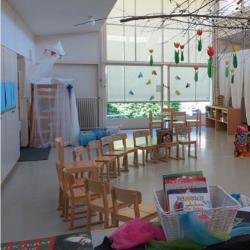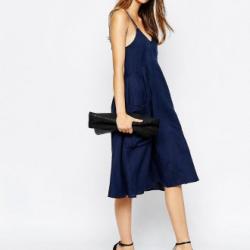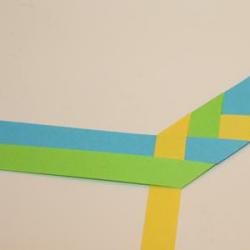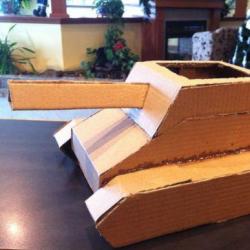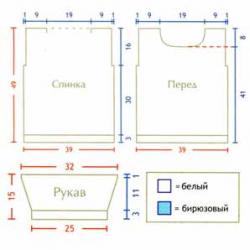DIY papier mache crafts bird. Chicken Struzhechka. Craft made from papier-mâché and pencil shavings. Master class: papier-mâché birds
Many people think that making papier mache crafts takes a very long time. Actually this is not true. And now you will see this for yourself using the example of charming birds, which can be an excellent gift, because these are blue birds - birds of happiness and goodness.
Step 1. First you need to choose the shape of the birds you will make. To begin with, you can take the simplest figurine of a bird to sculpt your figurine “from life”. You shouldn't go into details either. It will be enough to sketch a simple sketch and focus on it while working.

Step 2. Now make two balls from paper and sticky tape that visually resemble the body of birds. They should be no larger in size than a chicken egg.

Step 3. Then use paper and tape to form heads for the birds and cut out beaks from cardboard.

Step 4. Adjust the shape of the birds' heads. One of them should look straight, and the second should look down.

Step 5. To ensure that the birds stand steadily on a flat surface, glue a small oval made of cardboard to the bottom of each of them.

Step 6. Then you need to make tails for the birds. They should be fairly short. This will simplify the form. The tail should be made in the shape of a crescent from several strips of cardboard.

Step 7 Then glue the wings, which should overlap slightly with the tail.

Step 8 When the preparatory work is completed, it's time to start covering the shapes with paper.

Step 9 Mix newsprint with paste (flour + water). Apply each layer in stages: first on one side, then on the other. To speed up the drying process, place the birds in a preheated oven.

Step 10 The final layer should be made from just paste. Then you need to smooth out the contours and cover with glue so that the paste does not crack after drying. To do this, you can initially mix the paste with glue (for ¼ cup of paste, 1 tablespoon of glue).
Master class, papier-mâché: Bird.Materials for work:
pre-prepared paper pulp
foam ball (you can make a thick ball from rolled newspapers)
glossy cardboard for the beak, not very thick (a magazine cover will do)
corrugated cardboard, thickness approximately 0.5 mm, for wings and tail
2 round chopsticks for legs (you can use twigs, you can use Chinese chopsticks)
A little clay or polymer plastic for the paws.
Paper adhesive tape.
1. Cut out the wings and tail from corrugated cardboard. The part that will fit
should have an “arc” to the ball for a better fit. 
2. For the beak, cut out a circle from glossy cardboard, cut out from it (from
center) piece-segment and twist the cone, carefully gluing it with paper adhesive tape.
3. Glue everything to the bird with paper tape.
4. Glue several pieces of paper tape onto the ball for better adhesion of the paper pulp. Cover the tail and wings with tape. Corrugated cardboard should always be carefully covered with paper tape, because... he is afraid of humidity and loses his shape at work. 


6. We begin to apply the pre-prepared paper pulp on the bird’s body. I do not cover the beak, wings and tail with the mixture, but this is one way to work.
*** To make the mass lie more evenly, you need to smooth it with your hands dipped in glue (wallpaper + a little PVA)
7. Make eyes from small balls of paper pulp.
8. After covering the bird with paper pulp, hang it to dry. This takes approximately 2-3 days, depending on layer thickness and temperature. 


9. Prepare the paws from clay or polymer plastic, make holes in the paws with sticks for the paws and let the paws dry. photo 10; photo 11
10. We make holes for the legs in the body of the bird and attach them with hot glue, photo 9; glue the paws photo 12.
11. To make the bird stand, you can use different options: strengthen it on a board, make the legs large and stable. When decorating the board, you can glue the following pieces of glass instead of paws: photo 13
12. We prime the entire bird with a material for painting, which is called Gesso, this is thick white acrylic paint mixed with PVA glue, it covers all the small holes well. If you want to achieve an even smoother surface, then first putty, then sand the bird well, and after that cover it with material for painting.
13. When all the layers of primer have dried well, the most exciting part begins - painting the bird.
Here everyone has room for imagination.
SUCCESS!!! 
taken from here.
We all know that papier-mâché (French: “chewed paper”) - This is a plastic mass made of paper and glue. The technology originated in France and was used to make dolls. Now toys, vases, decorative items and much more are made from papier-mâché.
There are three main papier-mâché techniques. According to the first technology, a pre-prepared template is pasted over with small pieces of torn paper, held together with paste or glue. Layer by layer the paper creates the necessary composition.
According to the second technology option, the plastic mass is prepared from paper, glue (PVA or paste) and water. There are different cooking technologies. This mass (similar to plasticine) is applied to the base or frame, giving it shape.
The third version of the papier-mâché technology is gluing layers of the product under pressure, like plywood.
Today we will make cute birds out of papier-mâché.
Master class: papier-mâché birds
Crumple up the newspaper and cover it with cloth or paper soaked in glue, giving it the shape of a bird. Wrap in newspaper and wrap with paper tape.
Then you need to cut out the legs and wings from cardboard. Cover them with paper or cloth. Attach the wings to the body. Let dry. Paint with acrylic paints. Apply a thick layer of glue on top.
Make legs for the birds from wire. Wrap with cotton threads. Glue them to the leg with glue.
Drill holes for the legs. Attach the legs to the body by dropping glue into the hole.
Nancy Winn is an American animal sculptor. She uses wool, paper and recycled materials in her work. Sometimes you can’t even believe that all these living creatures are made from ordinary scrap materials. The main characters of her works are cats, dogs and rabbits. Nancy calls the process of creating a sculpture spontaneous and fun.
Larger jobs use a steel rod wrapped around a wire frame. In smaller works - only a wire frame. For the torso, newspapers and torn grocery bags, non-toxic glue and pastes are used.
The top of the sculptures can be covered with acrylic paint, pieces of fabric or beads.
Her work can be purchased in galleries in California or at the annual animal and art exhibitions in which she participates.
Nancy's past exhibitions:
Sebastopol Center for the Arts 2003 sculpture exhibit juried by Manual Neri
Sebastopol Center for the Arts Members" Exhibit 2005—2014
Open Studios, Art At The Source, 2006-7, 2009-10, 2012-13, & 2015
Innovations in Fiber Art, Sebastopol Center for the Arts Merit Award 2008
Paper Capers Exhibit, Arts Council of Idaho Falls 2006
The Cradle Project, New Mexico Community Foundation, Albuquerque 2008
Barns, Farms & Animal Crackers, Graton Gallery with Janet Moore 2008
Peace, Pastures & Beasties, Graton Gallery with Janet Moore 2009
NICHE Awards Finalist 2010
Let the Fur Fly, Epperson Gallery in Crockett, December 2011
Raptors & Birds, Santa Rosa Country Club, November 2012
Graton Gallery 7th Annual Invitational Exhibition, January 2013
Critters, with Jann Annestad, Risk Press Gallery, Sebastopol, 2014
Fun & Games, with Mylette Walsh, Graton Gallery, 2014
Critters, Pacific Union College, Angwin, CA, 2015
Nancy in her working studio.

Papier-mâché chicken.

Blue giraffe.



Red horse.

Dog with a stick, papier-mâché.


This is Milli Vanilli. Her wool is made from paper, mohair, sheep's wool, alpaca and an old mop.
Well, didn't she warm your heart? :)
Dog in a blanket.

A dog with a colorful collar.

Birthday dog.

Bernese Shepherd.


Fat cat.

Black and white cat.


Fat hare.



